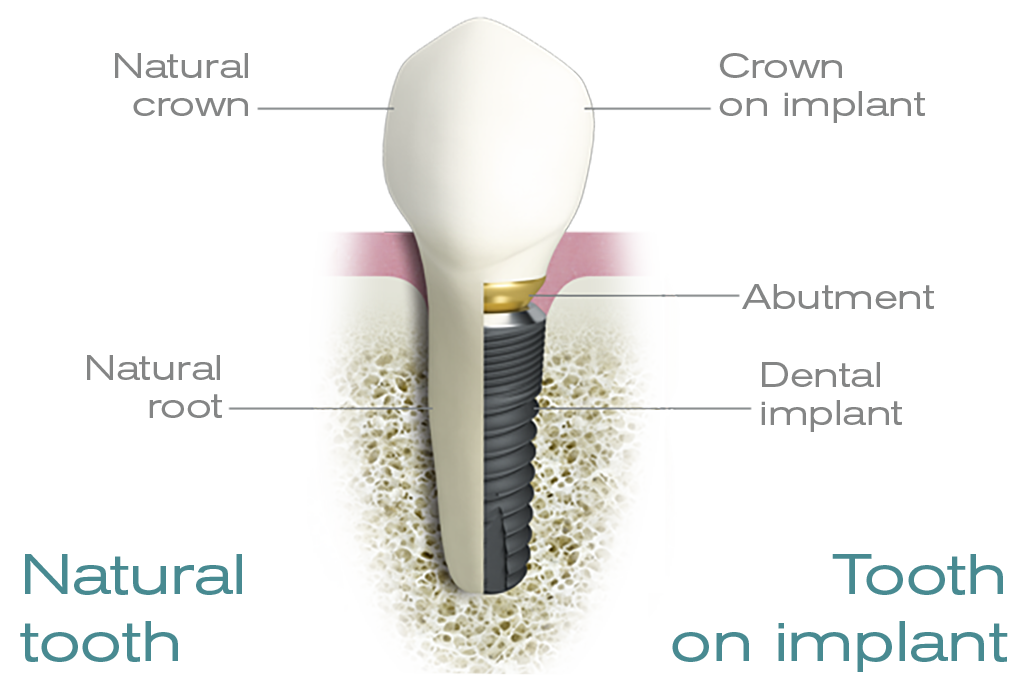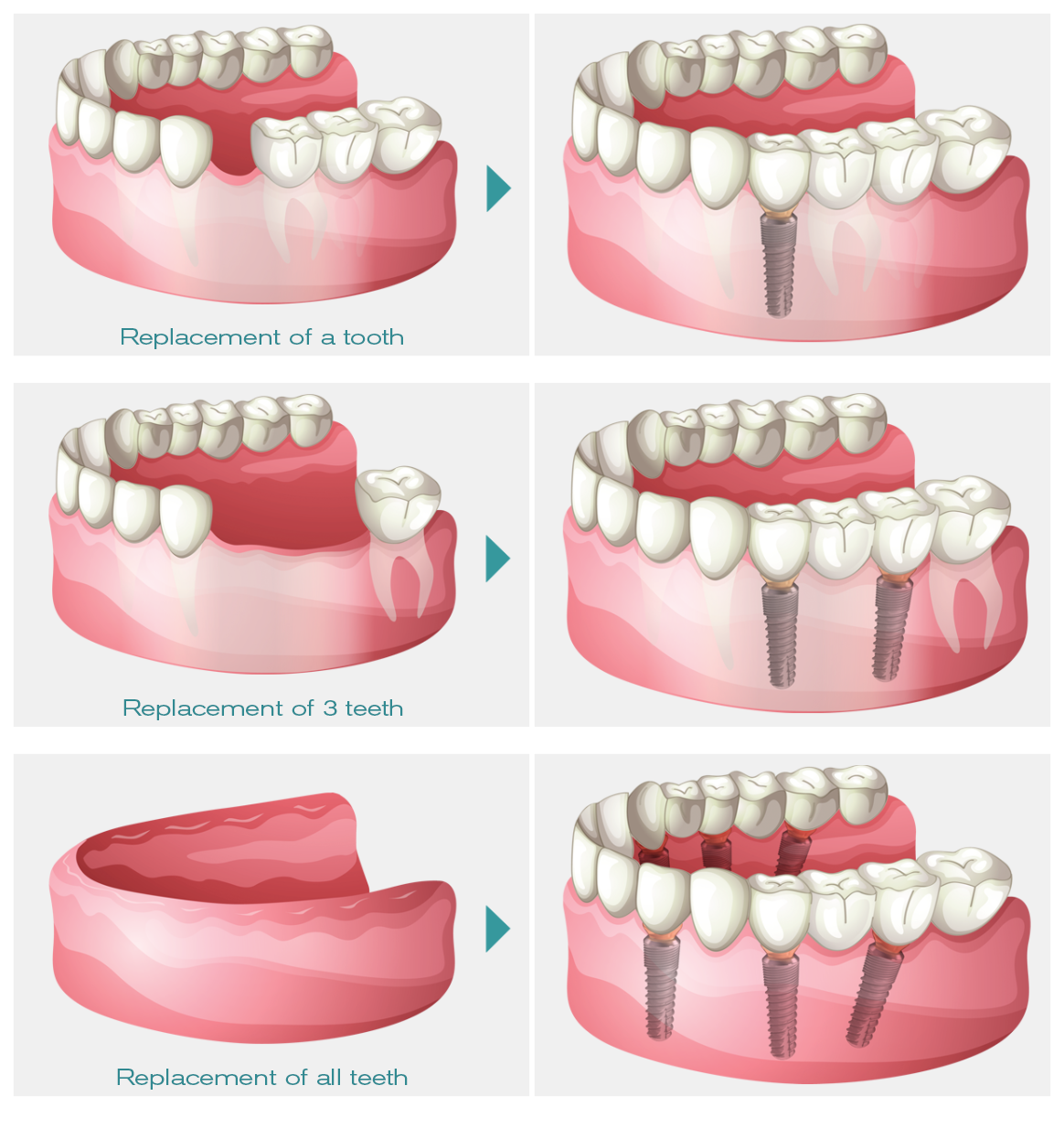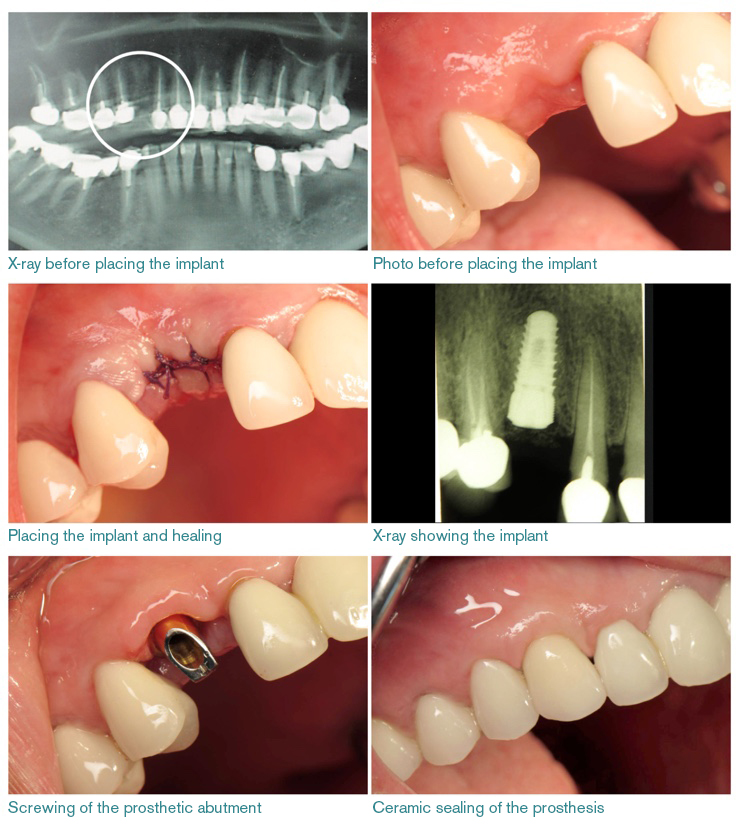Pre-implant questionnaire
Your clinician will take you through a questionnaire in order to:
- identify any contraindications for placing dental implants (serious cardiac pathologies, advanced osteoporosis, infectious diseases, etc.)
- assess beforehand any medical situations like local infection, type II diabetes, anticoagulant medications, etc.
Pre-implant exam
Your clinician will perform an oral examination to assess the condition of the area to implant and to find any cavities or gingivitis.
Your clinician will be able to prescribe or perform a 3D exam (scan or cone beam) to guarantee maximum security. It also detects any important elements: nerves, sinus or anatomic variations in the area to implant.
These exams make it possible to create a specific treatment plan, adapted to your particular situation and will inform you on the different steps, the duration of the treatment, and all the associated treatment.













